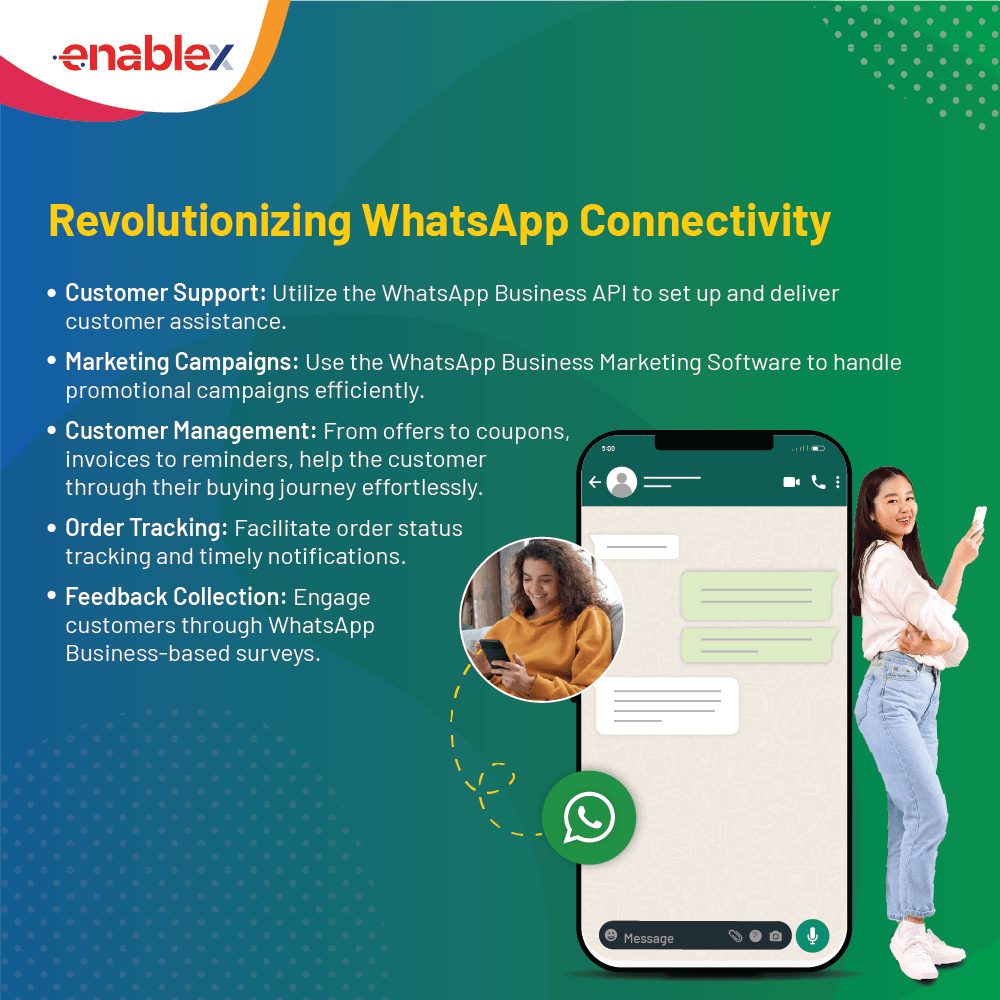Understanding WhatsApp Business API cost dynamics is imperative for businesses seeking to integrate it into their operations efficiently. The first step in demystifying WhatsApp Business API costs is understanding the core pricing principle: conversation-based charges. Unlike traditional per-message pricing, WhatsApp Business API charges businesses per 24-hour conversation window, regardless of the number of messages exchanged within that timeframe. This model rewards efficient communication and discourages excessive messaging.

Dissecting WhatsApp Business API Conversation Categories:
But not all conversations are created equal. WhatsApp Business API categorizes them based on their purpose, with each category carrying a distinct price tag:
- Marketing Conversations: These aim to promote products or services and initiate new customer relationships. Think promotional messages, abandoned cart reminders, or welcome messages.
- Utility Conversations: Focused on providing transactional or informational updates related to existing customer relationships. Examples include order confirmations, delivery notifications, or appointment reminders.
- Authentication Conversations: Used for one-time PINs or verification codes to secure user accounts or transactions.
- Service Conversations: These encompass all other interactions related to customer support, troubleshooting, and resolving inquiries.
What Are WhatsApp Business API Costs
The cost structure of WhatsApp API services varies depending on several key factors:
- Messaging Volume: Typically, WhatsApp Business API providers offer pricing tiers based on the volume of messages sent per month. Higher messaging volumes are often associated with lower per-message costs, incentivizing businesses to scale their usage for cost efficiency.
- Features and Functionality: Advanced features such as message templates, multimedia support, and automation capabilities may incur additional charges. Businesses should carefully assess their requirements against the available features to determine the most cost-effective solution.
- Service Level Agreements (SLAs): Some WhatsApp Business API providers offer premium SLAs guaranteeing uptime, delivery rates, and support responsiveness. While these enhanced services come at a higher cost, they can be indispensable for mission-critical applications where reliability is paramount.
- Support and Maintenance: Responsive customer support and ongoing platform maintenance contribute to overall service quality but may result in higher subscription fees. Businesses should evaluate the level of support needed based on their internal capabilities and operational requirements.
Factors Influencing WhatsApp Business API Cost Optimization
To minimize WhatsApp API costs without compromising performance, businesses can implement the following strategies:
- Message Segmentation and Targeting: Segmenting audiences based on demographics, behavior, or preferences allows businesses to tailor messages effectively, reducing the volume of messages sent indiscriminately and optimizing costs.
- Message Automation: Leveraging automation tools to handle routine inquiries, notifications, and customer interactions can significantly reduce manual intervention and operational overheads associated with handling messages manually.
- Message Templates: Utilizing pre-approved message templates on WhatsApp Business API for commonly sent notifications, such as order confirmations or appointment reminders, streamlines communication processes and may qualify for lower pricing tiers offered by WhatsApp API providers.
- Monitoring and Optimization: Regularly analyzing messaging metrics, such as delivery rates, response times, and engagement metrics, enables businesses to identify inefficiencies and refine their messaging strategies for cost-effectiveness.
- Contract Negotiation: For businesses with substantial messaging volumes or specific requirements, negotiating customized pricing plans with WhatsApp API providers can yield significant cost savings and tailored solutions aligned with business objectives.
While the WhatsApp Business API offers unparalleled opportunities for businesses to engage with their audience effectively, understanding its cost dynamics is essential for prudent financial management. By comprehensively analyzing pricing structures, leveraging optimization strategies, and negotiating favorable terms, businesses can harness the full potential of the WhatsApp API while maximizing cost efficiency.
FAQs
- What factors influence the cost of WhatsApp Business API integration?
- The cost of integrating WhatsApp Business API can be influenced by factors such as messaging volume, required features, service level agreements, support and maintenance, and any additional customization or integration requirements.
- Is there a standard pricing model for WhatsApp Business API?
- WhatsApp Business API providers typically offer tiered pricing based on messaging volume, with higher volumes often qualifying for lower per-message rates. Additional charges may apply for premium features, enhanced support, and custom solutions.
- How can businesses minimize costs when using WhatsApp Business API?
- Businesses can optimize costs by segmenting audiences, automating routine messages, leveraging message templates, monitoring, and optimizing messaging performance, and negotiating favorable terms with service providers based on their specific requirements.
- Are there any hidden costs associated with WhatsApp Business API integration?
- While the base pricing for WhatsApp Business API services is transparent, businesses should inquire about any potential hidden costs such as setup fees, API access fees, message delivery fees, or charges for exceeding messaging limits to ensure full cost visibility.
- What are the benefits of negotiating pricing plans with WhatsApp Business API providers?
- Negotiating customized pricing plans with WhatsApp Business API providers can result in significant cost savings, tailored solutions aligned with business objectives, and potentially access to premium features or enhanced support at discounted rates.
- How can businesses estimate their messaging volume to choose the appropriate pricing tier?
- Businesses can estimate their messaging volume by analyzing historical data, projecting future communication needs, and considering factors such as customer engagement patterns, marketing campaigns, and transactional interactions to select the most suitable pricing tier.
- What are the consequences of selecting the lowest-cost option without considering quality and reliability?
- Opting for the lowest-cost option without considering quality and reliability factors such as uptime, message delivery rates, and customer support responsiveness may result in subpar user experiences, reduced operational efficiency, and potential damage to brand reputation, outweighing any short-term cost savings.

